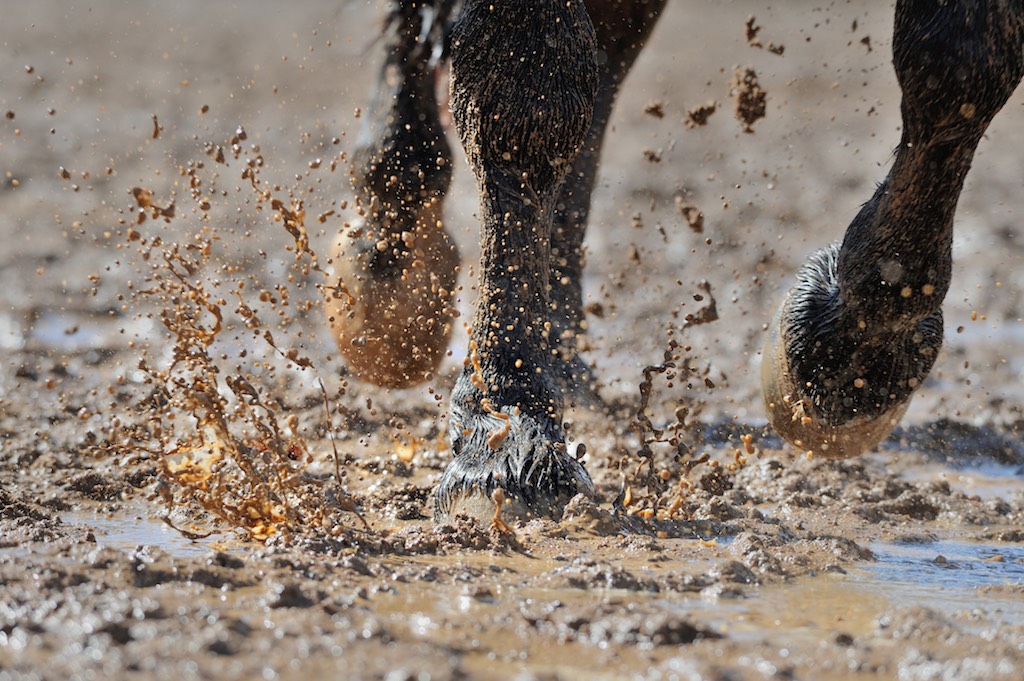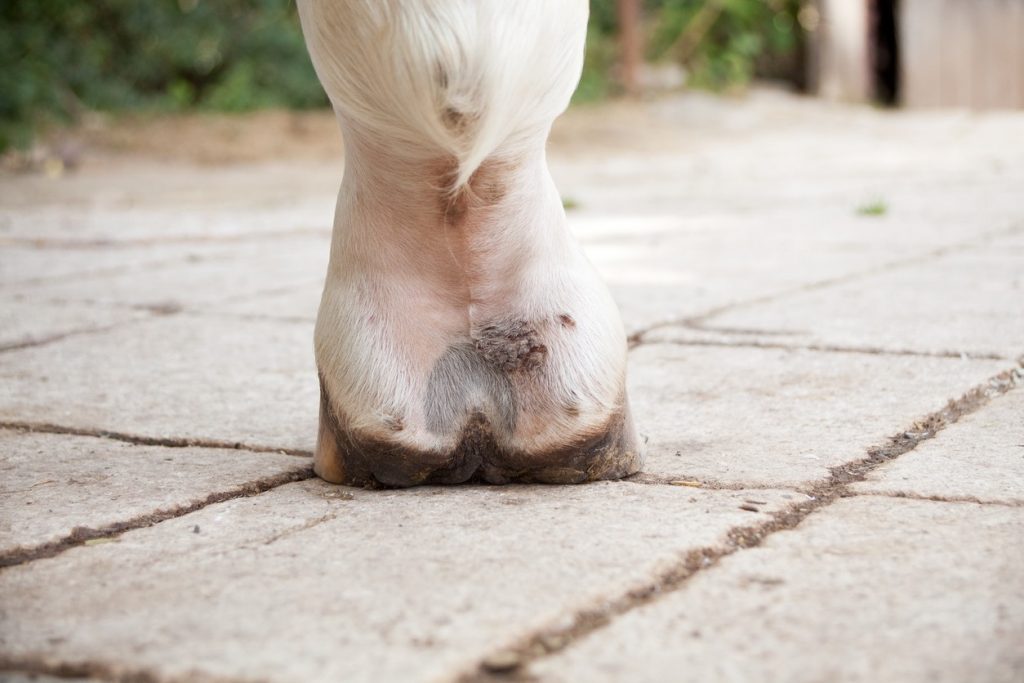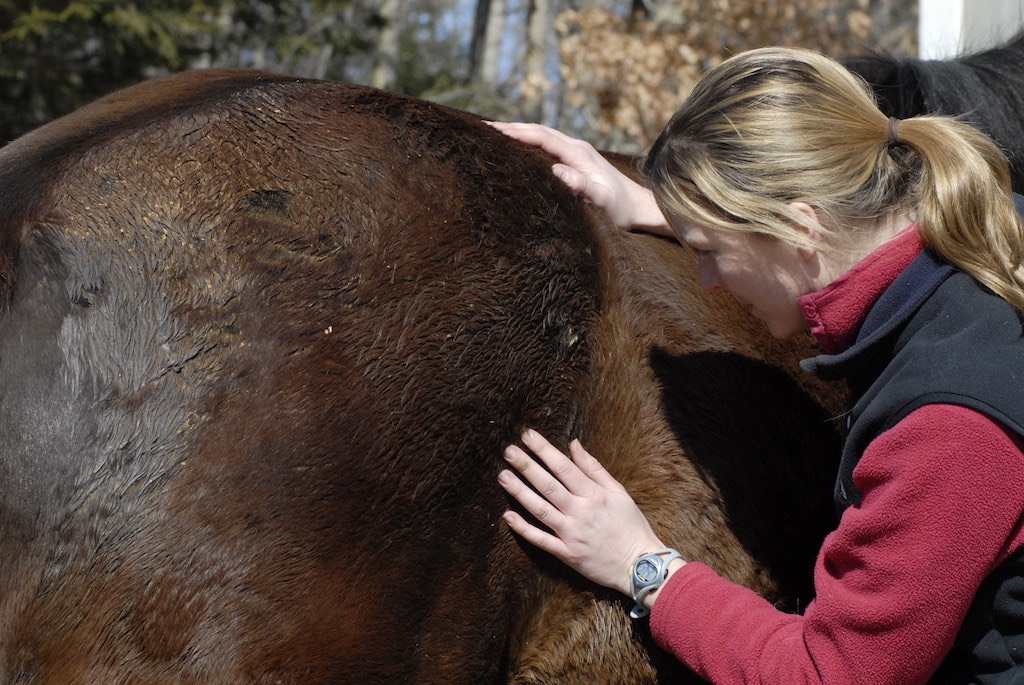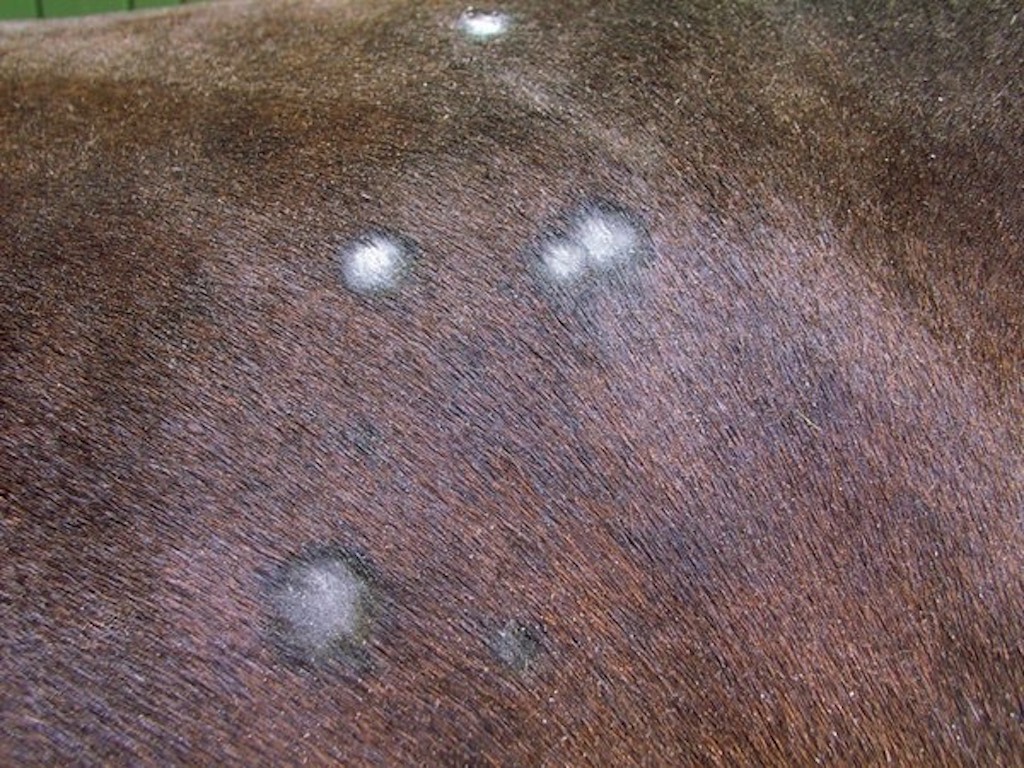
Winter is here and with it are cold, wet and muddy conditions. Anyone who is involved with caring for horses will know that winter is the time your own hands are likely to become dry and cracked due to the exposure to water and cold air. Your horse’s skin can become affected in a similar way (and is not so easy to keep clean, dry and moisturised).
The horse’s skin usually has a great defence system against all sorts of things: the weather, the environment, bacteria, viruses, parasites etc, but once damage occurs and these defence systems are damaged, then infection can become a real problem. The longer, thicker coat of winter is part of the defence but can also prevent us seeing small scratches as easily, and so a problem can have progressed before we notice it. As a result, there are several conditions that we more commonly see in winter and need to look out for.
Mud fever

Pastern dermatitis, also known as mud fever, greasy heel, or scratches, is probably the most common skin condition in winter (although it can occur all year round). It has many different names and even more suggested treatments. When a condition has as many treatments as this, it is because there is not one that works for every case, every time. In the case of mud fever this is because it is not actually one disease but the end result of different combinations of factors. The outcome always looks very similar – the lower leg is affected by scabs encasing the hair, with sore, weeping skin underneath and sometimes swelling of the leg.
Pastern dermatitis develops in three stages:
- It starts with the presence of a predisposing factor eg. genetics or environmental conditions.
- Next there is what we call a primary factor which starts the disease process, eg. a small scratch or crack in the skin, presence of leg mites, bacterial infection or in some cases an immune-mediated disease
- Finally there are perpetuating factors which keep the disease going and make it more difficult to treat, eg. the muddy conditions.
What to do about it
Some horses are predisposed to getting mud fever. Try to keep your horse’s environment as ideal as possible; there are now preventive barrier creams and sprays on the market. Take extra care to spot any early signs and treat as quickly as possible.
To treat a case, remove the scabs and keep the horse’s legs as mud-free as possible. Removing the scabs can be very painful for the horse, but doing this allows air to circulate underneath, and for any treatment to get to the bacteria to kill them. There are several ways to do this:
If it is not too severe, wash the area with chlorhexidine or iodine diluted in warm water. This will soften scabs and they can gently be removed. The legs should be dried afterwards. Antiseptic cream can then be applied.
Apply a cream to soften the scabs overnight. We have recently had success adding glycerin to our treatment; this stays in place and softens and loosens the scabs. Alternatively, apply bandages on top of the cream overnight to hold the moisture in and allow the scabs to soften.
In severe cases, a vet may need to sedate your horse to allow clipping and removal of scabs.
The scabs should be disposed of carefully as they will have a lot of the bacteria present. Antibacterial shampoos containing, for example, chlorhexidine and/or topical ointments containing silver sulfadiazine, 2% mupirocin, bacitracin or fusidic acid are usually effective against the bacteria involved and should be used. Dermatophilus congolensis is the main bacteria we usually associate with typical mud fever and Staphylococcus aureus is often involved as a perpetuating factor.
When to call your vet
Any time you are not sure, but particularly if the condition is getting worse despite treatment, or if the leg is starting to swell. There are other factors that can be involved in the disease: these need different treatments and, some cases, antibiotics.
Rain scald

Rain scald is a skin infection over the body, usually caused by one of the bacteria involved in pastern dermatitis/mud fever: Dermatophilus congolensis. It often appears over the back in the pattern that rain makes as it runs off, hence the name. It is similar to mud fever: there are usually lots of scabs which, when removed, contain hairs; the underlying skin is reddened and can be weeping.
What to do
Dilute iodine or chlorhexidine shampoos are very useful for treating this condition. As with mud fever, removing the scabs is important and can be done by softening with the shampoo and water. If there are any sunny days, leaving the cover off will help with airflow to dry the area and stop the damp, enclosed conditions that predispose it to the infection.
Remember to thoroughly wash/disinfect any covers and tack that has been in contact with the affected area.
When to call your vet
Call any time for advice and discussion but particularly if it is a very severe infection and/or if there is no improvement.
Cover sores
It is so important to check under covers regularly over winter. You just don’t know what is going on underneath them. I have been called to a large wound under the cover, that was not noticed for a few days. To be confronted with something like this would be very rare, but more commonly, horses can get cover rubs, and particularly ones over the withers can get infected. One of the bacteria that was discussed as being involved in pastern dermatitis/mud fever – Staphylococcus aureus – can sometimes be involved. This causes a very painful infection that can be difficult to treat.
What to do
Check under covers regularly and make sure they fit properly. Adjust/change the cover if it is causing chaffing. If there are wither sores, a large stuffed doughnut-shaped cushion can be made and attached to the inside of the cover over the withers to lift it off the sore area, or the cover can be taken off if conditions allow. Silver sufadiazine cream may also be useful in treating infection.
When to call your vet
If the sore doesn’t heal, if it is quite severe, if it is weeping or keeps on coming back or it is very painful.
Ringworm

Ringworm is a fungal infection of the skin. It is not just confined to winter but more commonly occurs in times of stress and when horses are in close confinement, which does happen in winter. It appears usually as patches of hair loss and scaliness, although can have more severe effects in some cases. Young horses or horses that are immunosuppressed are more prone to this common infection.
*Remember: humans can catch ringworm, so use gloves when handling any suspected cases.*
When to call your vet
Most cases will resolve themselves with time but unfortunately this can take up to six months. There are several treatments available, ranging from shampoos to medication, and a discussion with your vet is needed to decide on the best course of treatment for the situation, depending on whether one horse or many are affected. Any equipment that has been in contact with ringworm will also need to be thoroughly disinfected.
Lice

Lice are parasites that live on the horse. Infestations are more common in the winter as the cooler conditions are suitable for lice egg development. The adult lice are around 2-4mm long so can actually be seen moving around. The best way to check for them is to part the hair over the back of the horse – the lice will quickly move out of the direct light. Horses with lice show signs of rubbing themselves, hair loss, and can also be restless and have a poor appetite.
What to do
Call your vet to ensure a proper diagnosis and for advice on treatment. This is usually given three times at two-weekly intervals to treat any new lice hatching from eggs.
Conclusion
Although it is not possible for everyone to have perfect facilities with dry winter areas, or the ability to stable horses, we can take a bit of extra care checking under covers, looking out for skin damage under all the hair and keeping them as clean and dry as possible. Boosting your horse’s immune system with good nutrition, ensuring adequate vitamin and mineral supplementation with plenty of fibre, will also be of benefit as will ensuring a correct omega-3 to omega-6 ratio in the diet.
Finally, we can get through the battle with mud fever, cover sores and rain scald in the winter with the thought that it only lasts a few months… then we have the skin problems of insect allergies, photosensitisation and hives that come with spring to contend with!
– This article was first published in the July 2015 issue of NZ Horse & Pony








